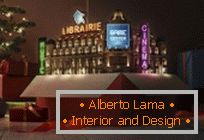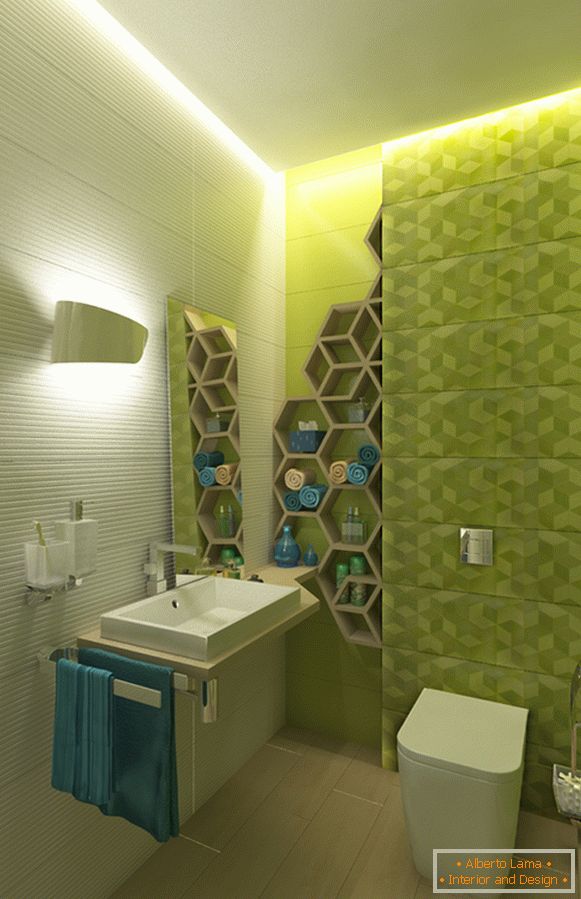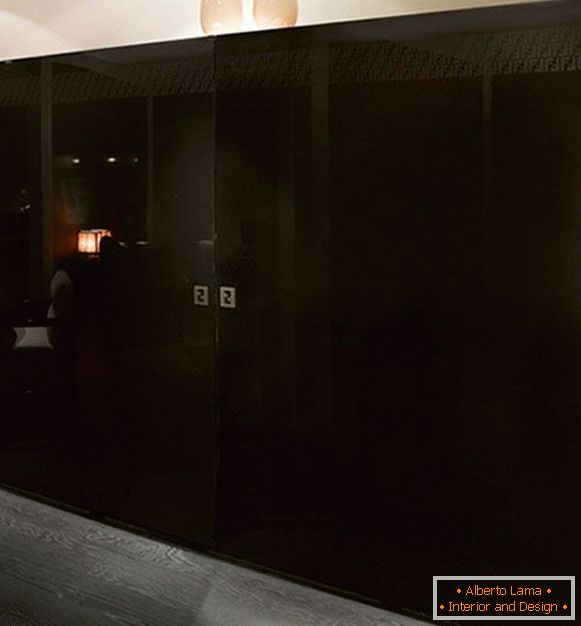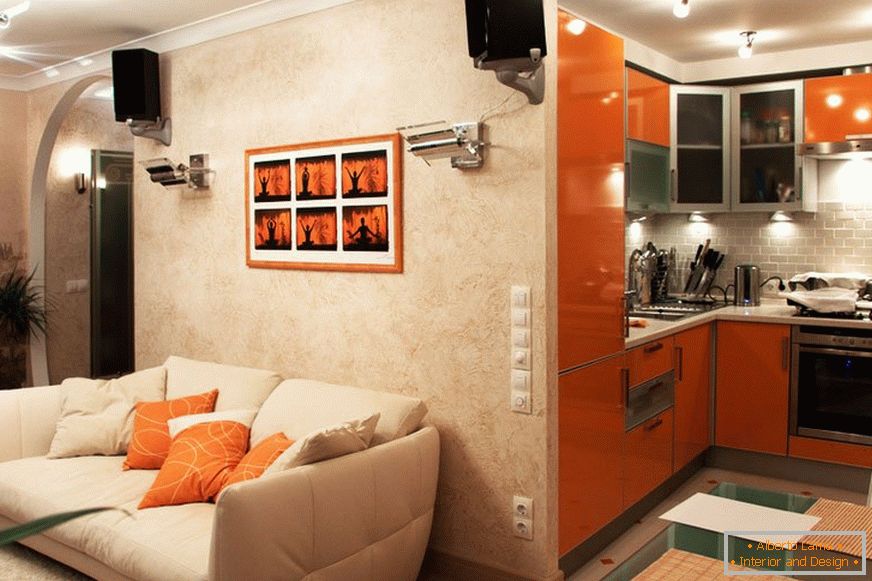
Kitchen-living room - a good solution for an apartment of any area, especially where the kitchenette size of only 5-6 square meters. meters. The combination of these two rooms is convenient, practical, because it remains popular for several years. The original, expressive design of the kitchen-living room in the "Khrushchev" will allow you to spend more time with your family, a big company of friends, almost forgetting about the crowdedness.
- there is a lot of free space;
- it is possible to make functional zones - working, dining, resting;
- in a combined room you get two windows, which makes the kitchen-living room brighter;
- It is easy to change the shape of all rooms in the apartment.
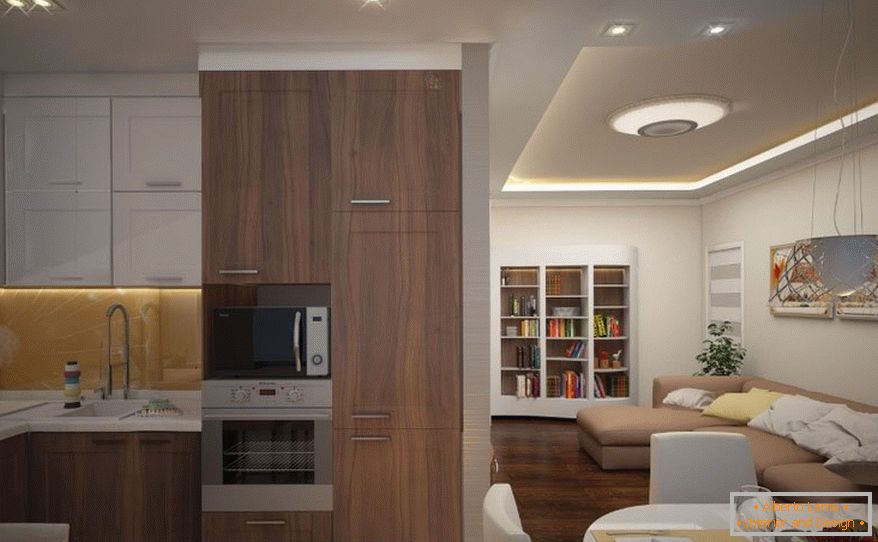
Negative points:
- permission to redevelop;
- for one-room apartment is suitable, if it is inhabited by one or two people;
- presence of smells from the kitchen area, sounds of household appliances;
- as the dining area will be in the hall, the orders will need to be guided a little more often.
To make the space look uniform, color, stylistic design, accessories, textiles should fit well with each other.
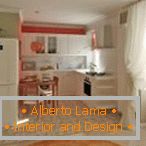
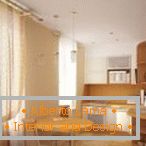
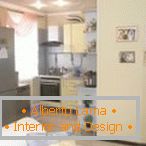
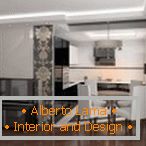
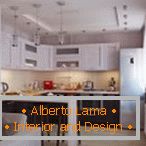
Variants of re-planning
There are several ways of reworking, combining a living room with a kitchen,
- to demolish the entire wall - perhaps only if it is not capital. The wall between the room and the kitchen is dismantled completely, the living room is enlarged by the entrance hall. The working part will be located in the alcove niche, the dining room - between the windows, the living room - in the hall of the apartment - "Khrushchev". Here the parameters of the corridor are very effectively used;
- partial demolition of the wall - remove 50-70% of the partition. The working area is located along three walls, dining - near the windows, on a wide window sill, with the adjoining bar counter;
- on the site of the door is a wall. The doorway leading to the kitchen is completely enclosed, the entrance is made through the living room, the working area becomes a bit larger due to several meters of the wall;
- Partial partition - the wall is demolished completely. A new one is being built, but not the whole, in the middle, parallel to the windows. In this case, the workspace is extended, the living room is separated.
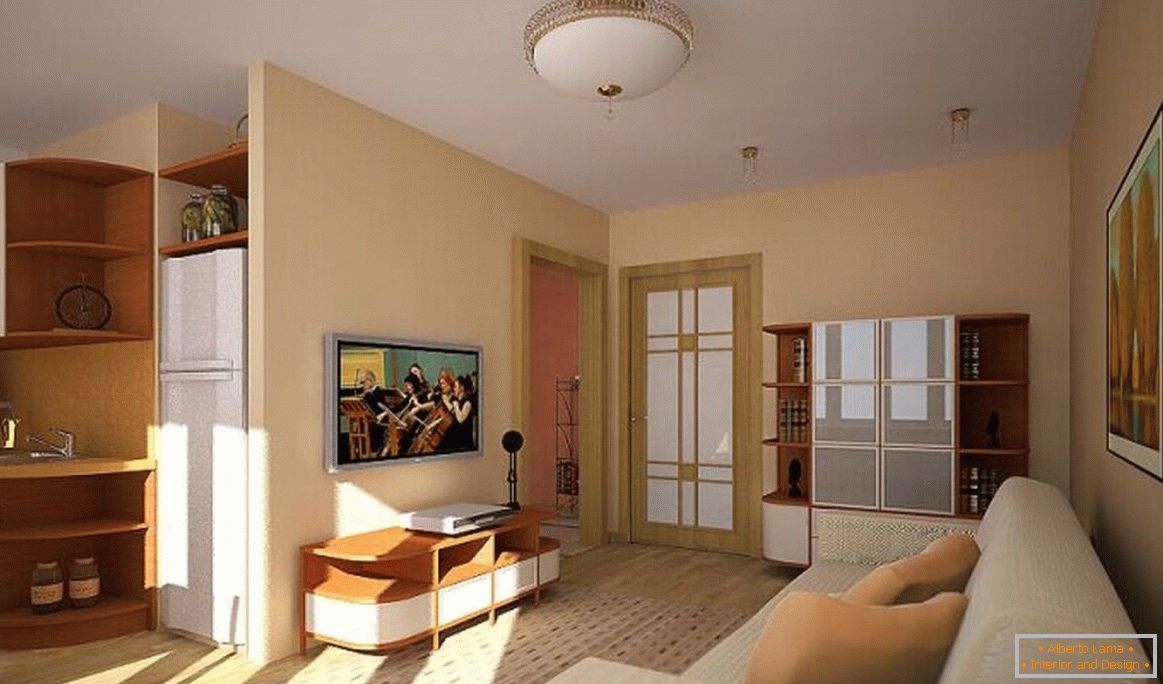
On the site where the wall was, often make a large, small arch, especially well combined with a sofa or a suite of rounded shape.
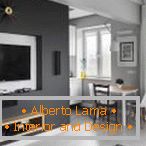
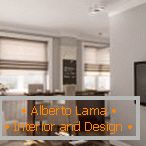
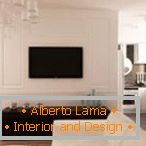
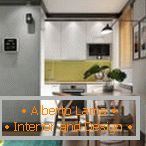
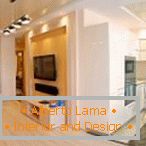
Competent zoning of the combined space
Zoning is done using:
- objects of furniture;
- different shape, ceiling height;
- podiums, steps;
- different wall and floor finishes;
- carpets;
- screens, screens;
- lighting.
Furniture does not need too much - the room is not that big. The set is mounted on the side of the back of the couch, the closet, separating the hall and the kitchen. The bar counter separates the dining area from the resting place.
See also: Gray kitchen in the interior: 60 successful combinations of colorsWith the help of ceiling height differences, the floor of the zone is also easy to separate. On the catwalk, a sofa or a dining area will be placed, placing the kitchen space on it is less convenient. Each level of the combined ceiling, workplace, and eating area are highlighted separately.
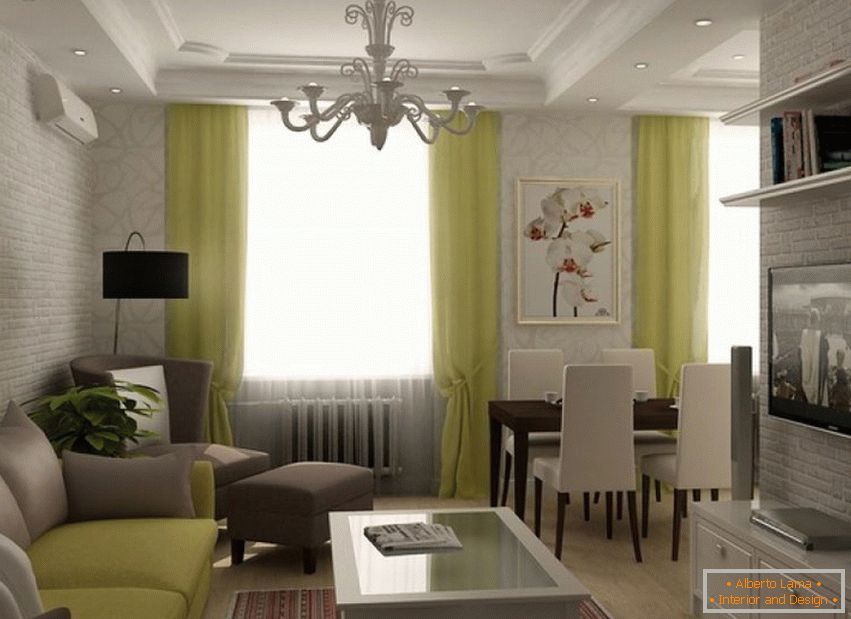
The living area in the combined room is distinguished by a carpet that neatly unites everything in the room, therefore it stands out rather large - from each of its edges to the walls there should remain 15-20 cm.
If the suite occupies all three walls in the kitchen part, there is practically no walls to be seen - only the apron, which is trimmed with plastic, glass panels, a tile placed on the floor, but different from the one in the hall. The living area is then decorated with wallpaper of one or two colors, decorative plaster.
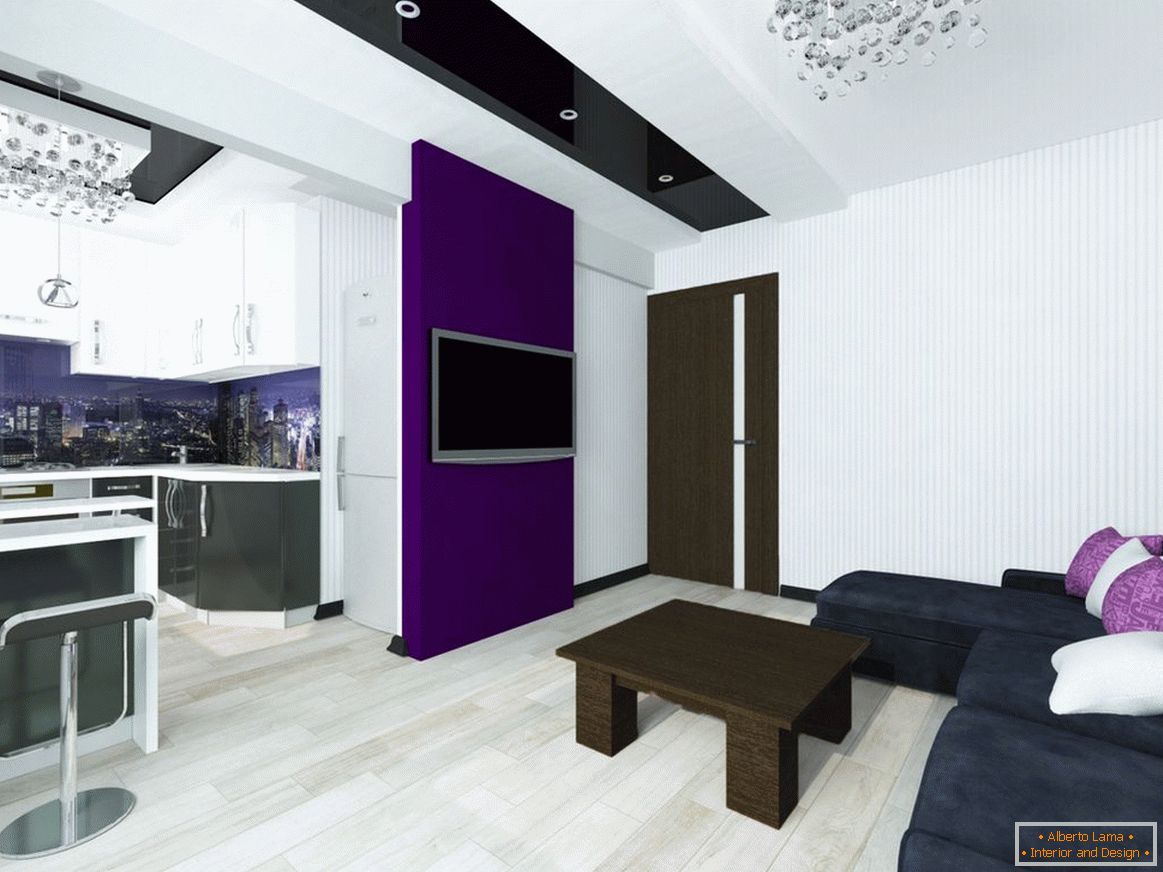
Screens, screens, gipsokartonnye partitions are used, if in the living room it is required to organize an office, a wardrobe, a separate sleeping place.
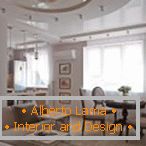
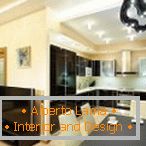
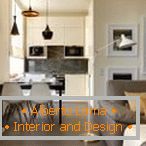
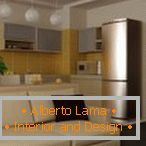
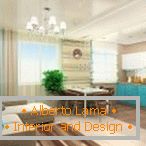
Color spectrum
The smaller the area has a combined room, the lower its ceilings, the warmer shades are needed for it. If, moreover, there is little natural light penetrating through the windows facing north, then the colors are acceptable as bright as possible. When the room is very spacious, with a ceiling no lower than 275 cm, windows facing south, south-east, use colder, more saturated colors.
It is recommended to apply at the same time two or three colors, of which the main occupies 60-65% of the territory of the room. The most popular combinations are:
- beige with chocolate;
- ocher with emerald green;
- sand with dark olive;
- brown with pearly;
- amaranth with red-purple;
- чертополоховый с кленовым;
- sky-blue with sun-yellow;
- indigo with a gray-turquoise;
- pastel-gold with brownish-black;
- apricot with purple;
- metal with wenge.
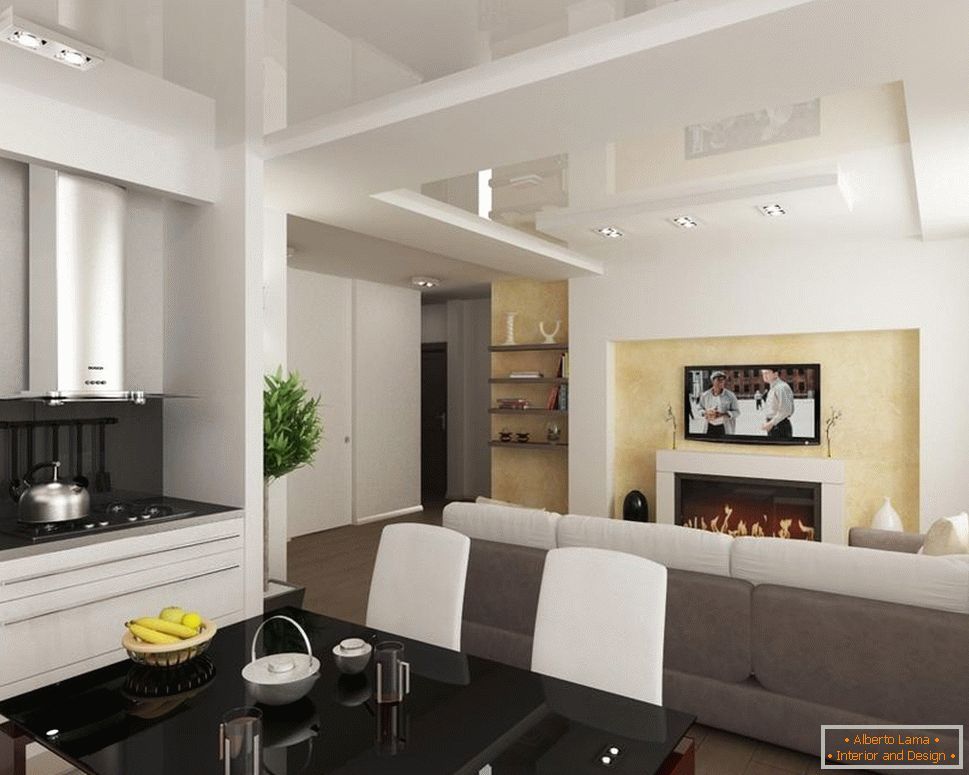
Gradient color transition from one zone to another is an original, bold decision that can become the main highlight of the interior. The darker part of the space should be illuminated more brightly, abundantly than the light one. Daylight is also taken into account.
Monochrome room looks boring, lifeless, so you need to add a few bright details from it.
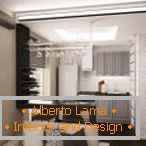
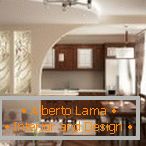
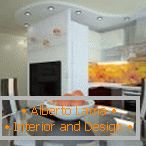

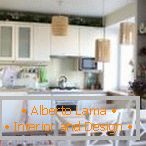
Lighting
The most brightly illuminated work area - here it should be convenient to cook at any time of the day. Even if it is decided to place at the window, where most of the day there is sunlight, a height-adjustable source of artificial light is still needed. When you place the dining area near the wall, it is lit with a sconce, and the lamp on the long cord hangs over the bar counter. On the sides of the sofa put floor lamps, if there is a closet in the hall, a dressing table with a mirror, a mini-cabinet, they are also highlighted sufficiently.
In addition to the local illumination, adjustable in brightness, the main overhead light is made - one or two ceiling lamps. Decorative lighting of the headset along the perimeter of the top, bottom, inside the glazed cabinets, add to the interior of mystery, solemnity.
Read also: We decorate the dining area in the kitchen 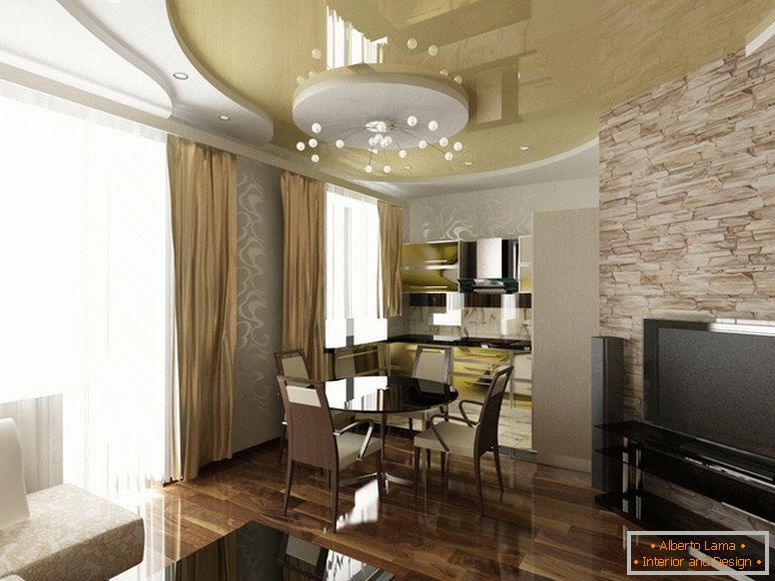
Additional lighting of the perimeter of the floor of the whole room will not bump into corners, do not wake up the rest of the tenants, if it was necessary to get up at night.
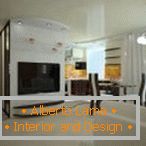
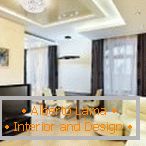
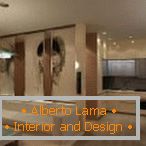
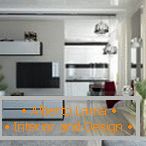
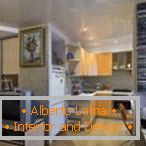
Materials, methods of decoration
Finishing materials are used traditional, modern:
- natural wood, its imitation;
- natural, artificial stone;
- Fiberboard, particle board;
- wallpaper;
- plasterboard;
- transparent, frosted, colored glass;
- various kinds of plastic, foam plastic;
- metals.
As a flooring in the kitchen used large ceramic tiles, moisture-resistant laminate, dense high-quality linoleum. The space of the hall is covered with carpet, it is decorated with parquet, laminate, which differs from what is laid in the kitchen. The floor is everywhere a little darker than the walls. The walls of the living room are glued wallpaper, obkladyvayut their decorative stone, brick, decorative plasters, wood panels. For the kitchen, washable wallpaper, plastic, glass panels near the stove, kitchen apron will fit. The dining area is highlighted with a contrasting canvas of neutral wallpaper or simply painted.
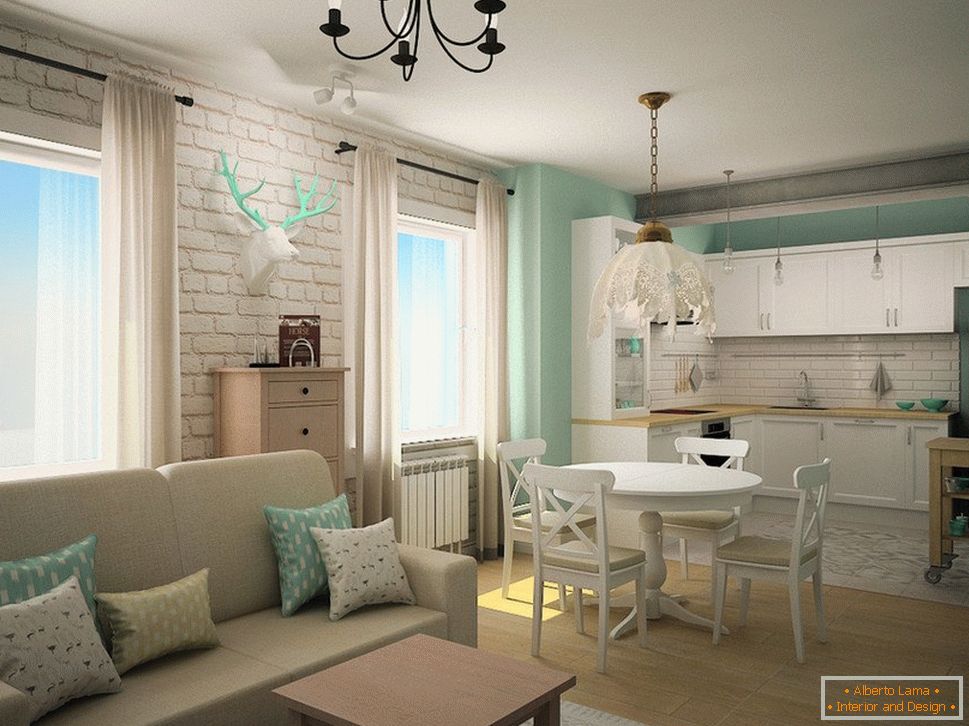
The ceiling is stretched, gypsum board, pasted with foam panels, or several materials are combined with each other. For the ceilings of the combined space in a private house, a natural tree is suitable - in different zones different breeds are used, preferably light ones.
In the kitchen-living room there can be openwork metal screens with plasma cutting, mirror screens, stained-glass windows.
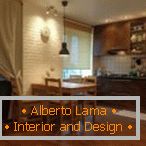
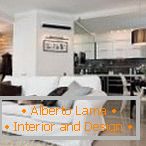
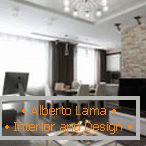
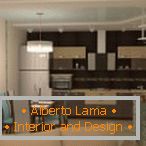
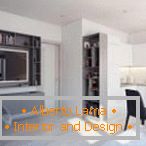
Stylistic directions
The most popular styles for the kitchen are the living room:
- hi-tech - an abundance of glass, shiny metal. The main colors are gray-blue, white, less often black. All household appliances are built-in, hiding behind monophonic facades. Furnishing - multifunctional, modular, transformable. Finishing materials - the most modern, bright lighting;
- classic - wooden furniture with flowing lines, light pastel shades. Windows, part of the lockers are draped with openwork curtains, the ceiling is decorated with a crystal chandelier. In the space of the hall the portal of the falsh-fireplace will be located;
- Scandinavian - massive furniture, strict forms, lots of light, free space. The main color is white and its shades, separate contrasting inclusions, mostly of cool colors, are admissible;
- Provence - furniture from light wood, "warm" shades, living plants in flowerpots on the windows, the floor. Finishing materials mainly natural, checkered or striped textiles, wallpaper decorated with "village" prints;
- minimalism - the interior is mostly monophonic, with rare color contrasts. No extra decor, kitchen machines are hidden behind the closed doors of lockers. The set, sofa, chairs or chairs are chosen by the simplest form. On the windows - bright blinds, Roman curtains;
- loft - rough wall finishing, a lot of light, no curtains on the windows. Furniture "under the old days", pretentious "factory" decor, undisguised communications. The ceiling is highlighted so that it appears high;
- Art Deco - smooth lines, mostly black and white colors. Finishing materials are used the most expensive, rare. Zones are clearly marked, many mirrors, "rich" decor, a luxurious multicolored chandelier in the center.
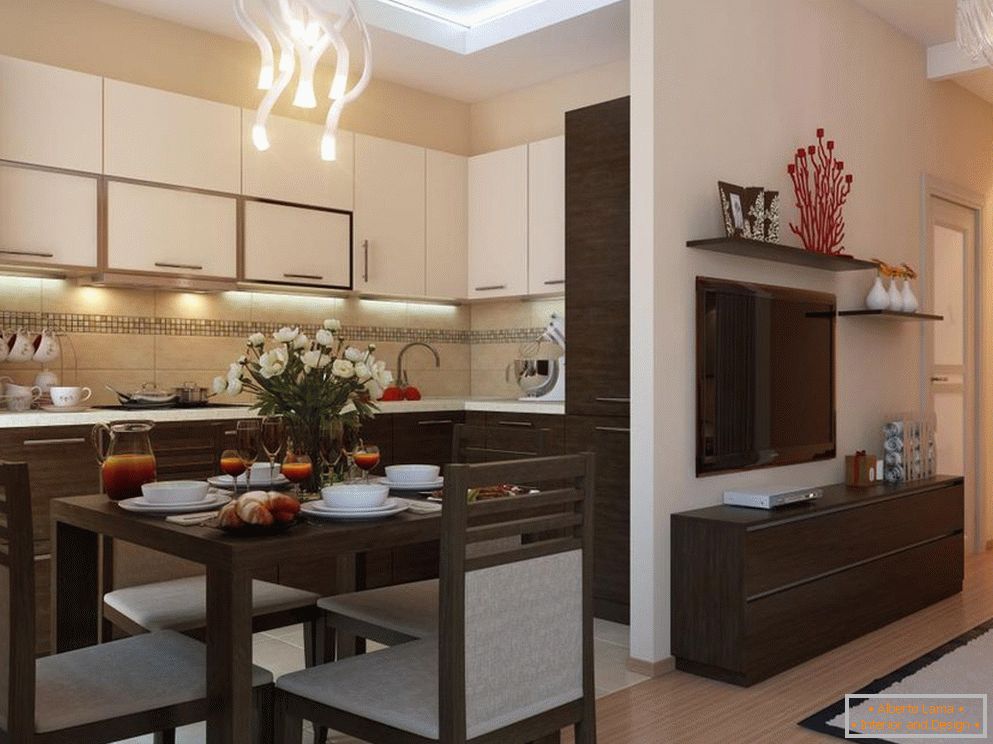
Choice of furniture, household appliances
Furniture is selected multifunctional, transformable, preferred materials - natural wood, metal, glass, particleboard, MDF. The kitchen sofa is laid out, forming an additional sleeping place, has under the bottom of the storage section. The kitchen set has a folding bar, used if the work surfaces are not enough. From the closet-bed at night one or two places for sleep are obtained, in the daytime the construction is added up. The worktop is a continuation of the window sill, the matching chairs are neatly fastened under it when not needed. A variety of hanging cabinets, "pencil cases", rotary structures, organizers, will allow storing all the necessary utensils as compactly as possible, and the notorious "Khrushchev refrigerator", with proper design, will be the continuation of the headset.
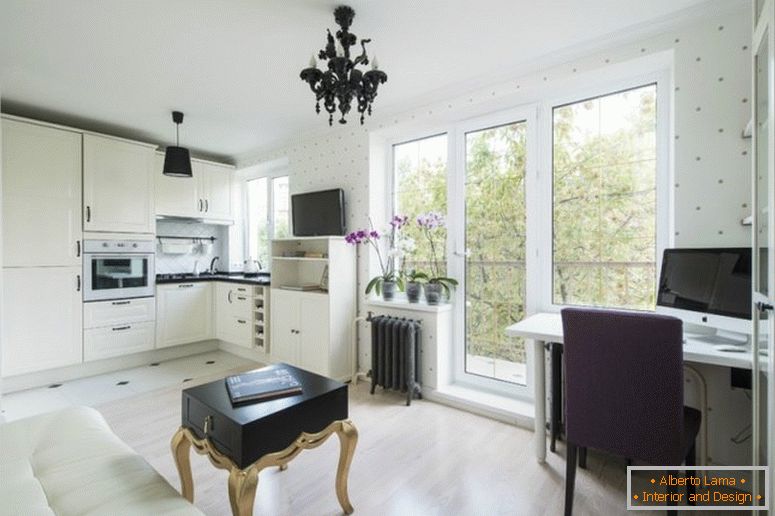
Household appliances are built into the kitchen set or placed in any convenient hostess places. The main thing is to observe the rule of the "working triangle" - so the labor costs for unloading products into the refrigerator, washing them, cutting them, heat treatment will be much less. Before you combine the room with the kitchen, you need to get a powerful hood - otherwise the smells of the cooking food will be absorbed into the upholstery of upholstered furniture, curtains, clothes, which is not always pleasant. The refrigerator is usually taken out of a cramped kitchenette, in the space where the corridor used to be, near the dining area.
Furniture, coinciding in color with the walls, the floor, will create the feeling of an infinitely spacious room.
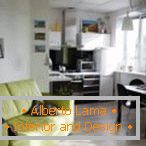
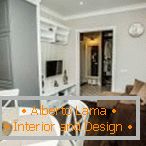
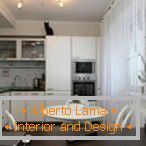

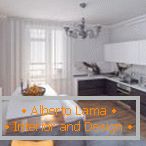
Textiles, decor, accessories
Decorative elements must match the chosen style of the room, combined with each other. Their compatibility will allow even more to unite both rooms. The upholstery of chairs and armchairs is in harmony with the pattern on curtains, wallpaper, a pattern on the carpet - with embroidery on cushions, table linens. The wall in the dining area will be decorated with decorative plates of various sizes, clay, carved panels. A series of black and white photos, a couple of pictures in frames will be placed in the living room, "surrounding" the flat screen TV, complementing it. The kitchen will take shape 3D stickers, matching the wallpaper in one of the walls of the hall.
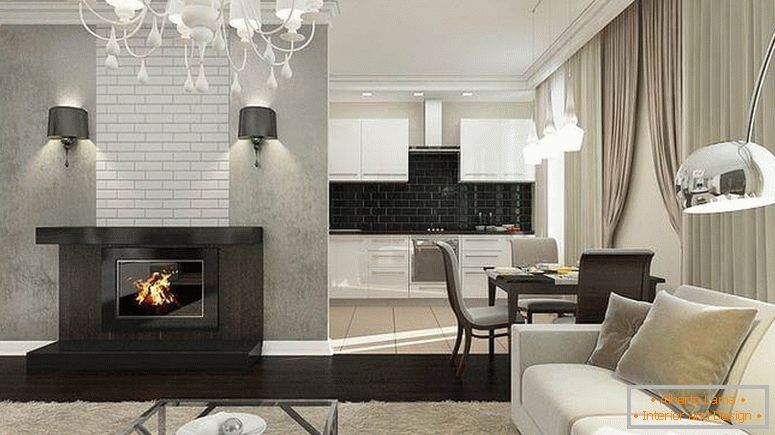
Stone floor vases with dry bouquets, carved figurines on shelves, colorful cushions, clay whistles of all times and peoples should not be present in large numbers - a maximum of three or five of the most beautiful, diverse. Numerous decor collects dust, the room looks untidy.
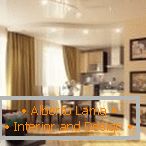
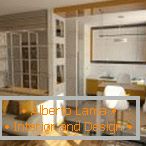
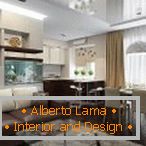
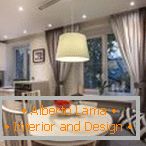
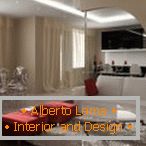
Conclusion
The combination of kitchen and living room significantly improves the appearance of the interior, visually making the apartment more spacious, lighter. The usual "Khrushchev" after re-planning becomes very modern. There are a lot of design solutions for such premises, everyone will find an option that he will like.

